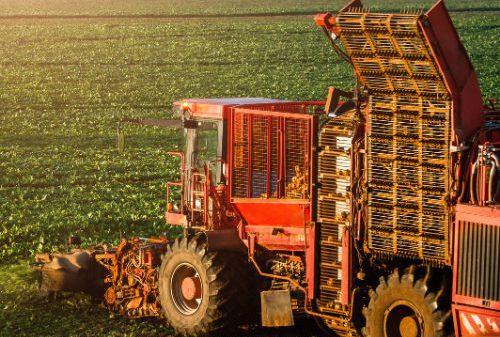最終更新日:2020/03/10
(Featured AI and healthcare) Neural network predict the influence of the swelling of the face due to tooth extraction (Publication)
[論文] Wei Zhang, Jun Li, Zu-Bing Li and Zhi Li. “Predicting postoperative facial swelling following impacted mandibular third molars extraction by using artificial neural networks evaluation”. Scientific Reports, 8, 12281 (2018).
[DOI: 10.1038/s41598-018-29934-1]
3つの要点
✔️下顎第三大臼歯(親知らず)の抜歯による顔面腫脹の影響を、ニューラルネットワークを用いて予測することができる。
✔️この予測の精度を評価することが、本研究の目的である。
✔️改良されたアルゴリズムの予測精度は98.00%に達し、これは正確な予測手法として承認されている。
概説
第三大臼歯(親知らず)抜歯後の患者の術後の顔面腫脹は、生物学的影響と社会的影響の両方を持つ可能性がある。本研究の目的は、埋伏している下顎第三大臼歯抜歯後の術後顔面腫脹の予測における、人工ニューラルネットワークの精度を評価することである。本研究では、適応BP(backpropagation)アルゴリズムと共役勾配BPアルゴリズムを組み合わせた、改良共役勾配BPアルゴリズムを用いた。このニューラルネットワークモデルでは、患者の個人的要因、第三大臼歯の解剖学的要因、埋伏した下顎第三大臼歯の抜歯後の顔面腫脹に対する外科的処置の要因間で、関数的な射影関係が成立した。このモデルは、400人の患者から得られたデータに基づいて訓練および試験がおこなわれた。300人の患者のデータは訓練サンプルとして作られ、そして残りの100人の患者のデータが試験サンプルとして割り当てられた。改良共役勾配BPアルゴリズムは、局所的最小値の問題を効果的に回避するだけでなく、ネットワーク訓練速度を大いに改善することができた。ニューラルネットワークの予測精度をより良くするために5-分割交差検証(5-fold cross-validation)を使用し、一般化を改善するために早期終了(early stopping)を使用した。このモデルでの、埋伏した下顎第三大臼歯の抜歯後の顔面腫脹の予測精度は98.00%であった。この人工知能モデルは、埋伏した下顎第三大臼歯の抜歯後の顔面腫脹を予測するための正確な手法として承認されている。
エポック数(一つの訓練データを何回繰り返して学習させるか)が28のとき、エラーが最も小さくなった。
ニューラルネットワーク出力値が0.4より小さい場合は軽度の腫脹または腫脹なしを意味しており、0.4から0.6の間の場合は中程度の腫脹、0.6より大きい場合は激しい腫れを意味している。予測テストデータセットでは、98ケースが現実と一致し、予測精度は98.00%であった。
著者
Wei Zhang (The State Key Laboratory Breeding Base of basic science of Stomatology (Hubei-MOST) and Key Laboratory for Oral Biomedical Engineering of the Ministry of Education (Wuhan University), Wuhan, China / Department of Endodontics, School and Hospital of Stomatology, Wuhan University, Wuhan, China)
Jun Li (School of Mechanical and Materials Engineering, Jiujiang University, Jiujiang, China)
Zu-Bing Li (The State Key Laboratory Breeding Base of basic science of Stomatology (Hubei-MOST) and Key Laboratory for Oral Biomedical Engineering of the Ministry of Education (Wuhan University), Wuhan, China / Department of Oral and Maxillofacial Surgery, School and Hospital of Stomatology, Wuhan University, Wuhan, China)
Zhi Li (The State Key Laboratory Breeding Base of basic science of Stomatology (Hubei-MOST) and Key Laboratory for Oral Biomedical Engineering of the Ministry of Education (Wuhan University), Wuhan, China / Department of Oral and Maxillofacial Surgery, School and Hospital of Stomatology, Wuhan University, Wuhan, China)
出版情報
Received: 05 December 2017 / Accepted: 16 July 2018 / Published: 16 August 2018
Open Access This article is licensed under a Creative Commons Attribution 4.0 International License, which permits use, sharing, adaptation, distribution and reproduction in any medium or format, as long as you give appropriate credit to the original author(s) and the source, provide a link to the Creative Commons license, and indicate if changes were made. The images or other third party material in this article are included in the article’s Creative Commons license, unless indicated otherwise in a credit line to the material. If material is not included in the article’s Creative Commons license and your intended use is not permitted by statutory regulation or exceeds the permitted use, you will need to obtain permission directly from the copyright holder. To view a copy of this license, visit http://creativecommons.org/licenses/by/4.0/.
■サポートのお願い
AIDBを便利だと思っていただけた方に、任意の金額でサポートしていただけますと幸いです。































 PAGE TOP
PAGE TOP